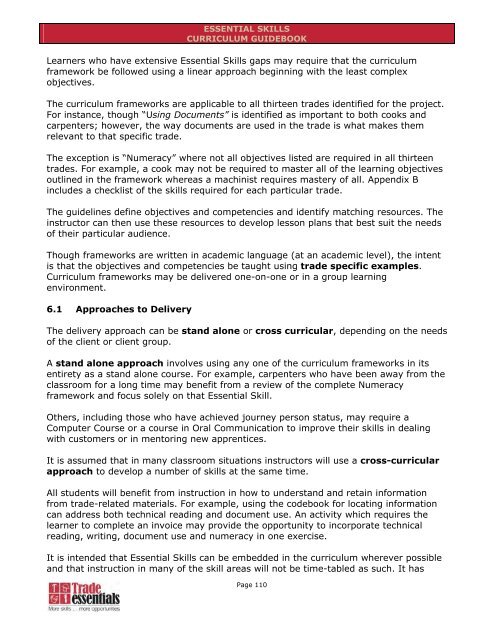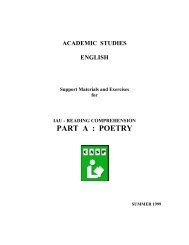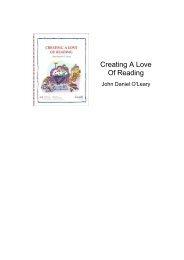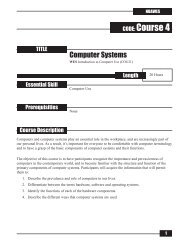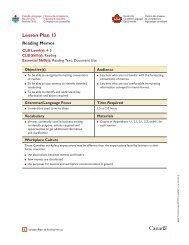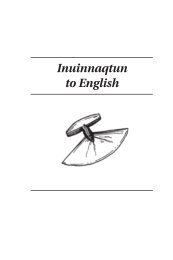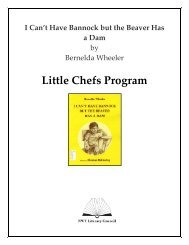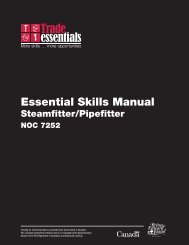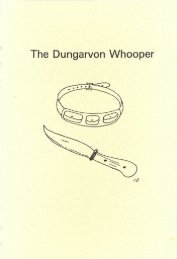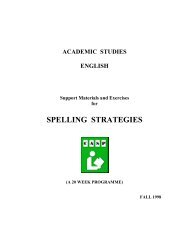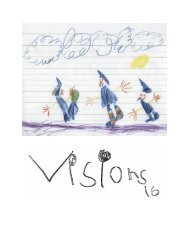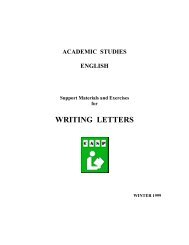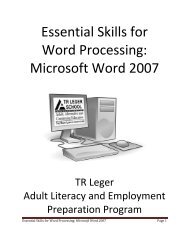Essential Skills Manual - Automotive Service Technician
Essential Skills Manual - Automotive Service Technician
Essential Skills Manual - Automotive Service Technician
Create successful ePaper yourself
Turn your PDF publications into a flip-book with our unique Google optimized e-Paper software.
ESSENTIAL SKILLS<br />
CURRICULUM GUIDEBOOK<br />
Learners who have extensive <strong>Essential</strong> <strong>Skills</strong> gaps may require that the curriculum<br />
framework be followed using a linear approach beginning with the least complex<br />
objectives.<br />
The curriculum frameworks are applicable to all thirteen trades identified for the project.<br />
For instance, though “Using Documents” is identified as important to both cooks and<br />
carpenters; however, the way documents are used in the trade is what makes them<br />
relevant to that specific trade.<br />
The exception is “Numeracy” where not all objectives listed are required in all thirteen<br />
trades. For example, a cook may not be required to master all of the learning objectives<br />
outlined in the framework whereas a machinist requires mastery of all. Appendix B<br />
includes a checklist of the skills required for each particular trade.<br />
The guidelines define objectives and competencies and identify matching resources. The<br />
instructor can then use these resources to develop lesson plans that best suit the needs<br />
of their particular audience.<br />
Though frameworks are written in academic language (at an academic level), the intent<br />
is that the objectives and competencies be taught using trade specific examples.<br />
Curriculum frameworks may be delivered one-on-one or in a group learning<br />
environment.<br />
6.1 Approaches to Delivery<br />
The delivery approach can be stand alone or cross curricular, depending on the needs<br />
of the client or client group.<br />
A stand alone approach involves using any one of the curriculum frameworks in its<br />
entirety as a stand alone course. For example, carpenters who have been away from the<br />
classroom for a long time may benefit from a review of the complete Numeracy<br />
framework and focus solely on that <strong>Essential</strong> Skill.<br />
Others, including those who have achieved journey person status, may require a<br />
Computer Course or a course in Oral Communication to improve their skills in dealing<br />
with customers or in mentoring new apprentices.<br />
It is assumed that in many classroom situations instructors will use a cross-curricular<br />
approach to develop a number of skills at the same time.<br />
All students will benefit from instruction in how to understand and retain information<br />
from trade-related materials. For example, using the codebook for locating information<br />
can address both technical reading and document use. An activity which requires the<br />
learner to complete an invoice may provide the opportunity to incorporate technical<br />
reading, writing, document use and numeracy in one exercise.<br />
It is intended that <strong>Essential</strong> <strong>Skills</strong> can be embedded in the curriculum wherever possible<br />
and that instruction in many of the skill areas will not be time-tabled as such. It has<br />
Page 110


